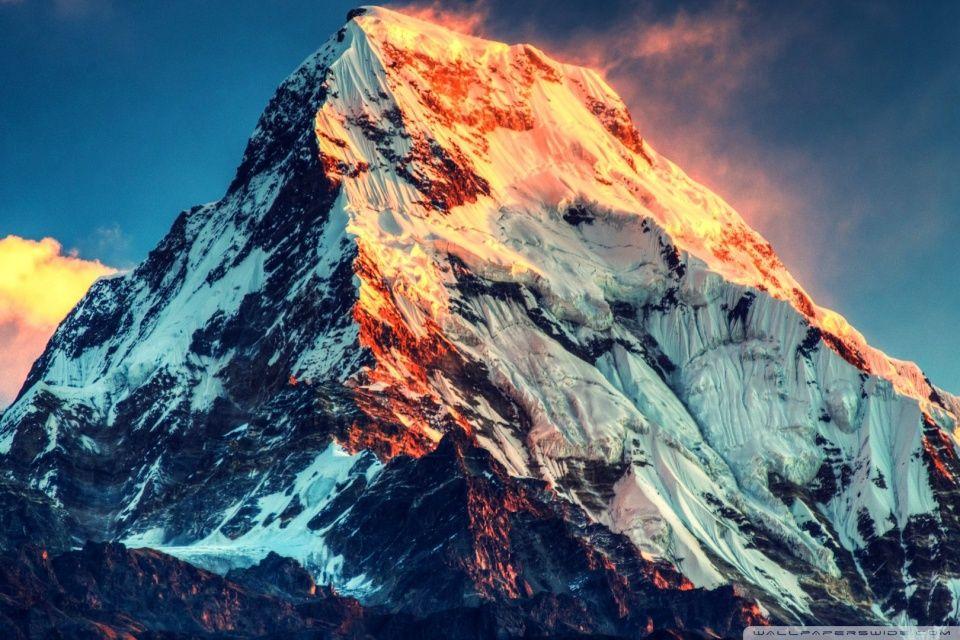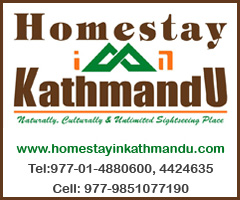
Everest Base Camp Trek
This is a fixed departure trek. Everest Base Camp Trekking With full excitement about the trek starting Every day from Kathmandu and back to Kathmandu on 2024/25, You will enjoy the grip of time around the Kathmandu Valley with any necessity to buy or wondering of toward the historical sites as your flight will be landing tomorrow at Lukla for your start point of the trek.
The trek continues through the nice pine and rhododendron forest, with the sharp, icy peaks of Thamserku and Kusum Kanguru towering above the trail, to Namche Bazaar (3446m); then you take your first rest days for acclimatisation.
Then you head towards the breathtaking Thyangboche Monastery, where Mani walls and Chortens, with prayer flags, are a familiar sight reminding you of the local Buddhist culture. You may also encounter musk deer, Thar, and Impeyan pheasant along the way.
You now go above tree line, and the scenery changes to grim glacier moraine, turquoise-colored lakes, and snow-capped giants of Himalayas. You gradually ascend to Lobuje 4,930m and then to Gorak Shep, the highest night on the trek. The trail follows the Khumbu glacier to the summit of Kala Patar 5,545m where you savor brilliant, close-up, views of Mount Everest Trek with a 360-degree panorama of the world's highest mountains. You have a short walk to Everest BaseCamp Trekking to enjoy all the history that has occurred in this area. Correctly, this trek is called a classic Everest trek.
Trip Itinerary for Everest Base Camp Group Join Trek, Fixed Departure EveryDay 2024/2025
Day 01: Fly from Kathmandu to Lukla (2886m.) and it takes about 30 minutes. Early morning flight.
Trek from Lukla to Phakding (2640 m.) which takes approximately three hours. You transfer to the domestic airport for your flight to Lukla. Lukla is a small town with an airport. There are few tea shops, lodges, hotels and general stores. You begin today’s trek from Lukla following a gentle climb up the mountainside on the left bank of the Dudh Koshi river. Nupla (5885m) can be seen in the distance on the opposite bank, is a peak atop the Kongde Ridge. You descend a mountainside path that merges into your route to Everest, with views to a valley to your right; and at its far end, Kusum Kang (6367m.) The Dudh Kosi approaches as you pass a Mani wall and arrive at Ghat Tea house. You continue along a small path with many climbs and descents following the left bank of Dudh Koshi to Phakding.or We may move to Monjoo if there is time than Over night in lodge.
Day 02: Trek from Phakding to Namche Bazaar (3440 m.) and it takes approximately five hours.
The trail starts along a level path along the right bank. Thamserku looms skyward on the opposite bank. You cross a stream and climb the terraced hill from the Dudh Koshi route, to arrive at Bengar. The trail now climbs from the riverbed on the left bank into the mountain, through a forest to Chumoa. You continue along a path with many ups and downs; cross a stream, and pass by the tiny village of Monjo. Now you descend the path of stone steps and return to the right bank over a wooden bridge. After a short climb you come to Jorsale’s Tea house and hotel, also stop at the National Park Service where a park entrance fee is collected. After your departure from Jorsale, you enter a forested mountainside. You follow a short walk along the riverbed of this V-shaped valley where the river forks - the right is the Dudh Koshi and the left is the Bhote Koshi that leads to Nampa La. After short distance along the Bhote Koshi, begin the steep ascent to Namche Bazar. As the mountain path zigzags uphill, you will emerge at a ridge top rest area that offers excellent views of Everest (8848m) and Lhotse (8516m.) The climb eases somewhat, and Namche Bazar appears ahead as you travel along the path surrounded by pines. Pass the plateau where the Saturday bazaar is held and enter the village. Namche Bazar (3440m) is surrounded on three sides by mountain ranges and opens out only where it faces the Bhote Koshi. The village is a central hub of the area and food, sundries and even mountain climbing equipment may be purchased here, Over night at lodge.
Day 03: : Rest day at Namche Bazaar (3440 m.) for acclimatization.
Namche is tucked away between two ridges amidst the giant peaks of the Khumbu and has an abundance of lodges, tea shops and souvenir shops as well as a magnificent outlook. It is an ideal place to spend a rest day for acclimatization to the high altitude before heading off towards Tyangboche. For the acclimatization you walk Up To Khhumjung where you can visit monastery. Khhumjung is densely populated by Sherpa community. Best View point is Everest View hotel and You can also enjoy the splendid views of Everest, Ama Dablam, Thamserku, Nuptse, Lhotse, Tawche, Kwangde and so on. Or you can have an hour walk up to the Syangboche (3800m.) where Everest View Hotel is situated above Namche for the outstanding view of Everest, Nuptse, Lhotse, Ama Dablam, Thamserku and Kusum Kangaru. .There is also good views from the National Park Centre and Museum just above the town. This museum exhibits Sherpa culture. Over night at Lodge.
Day 04: Trek from Namche Bazaar to Tyangboche (3867 m.) which takes about five hours.
Leave the village for a climb to the top of a ridge and level mountain path that offers an excellent panorama of Thamserku, Kantega, and Kusum Kangrib. To the right there is a steep cliff that drops down to the Dudh Koshi, faintly visible on the valley floor below. Make your way around a branch ridge, and Ama Dablam (6812m) Everest, Lhotse, Nuptse (7855m) and Tawoche (6501m) suddenly appear. After a gentle descent the mountain path ends; you will come to the fork leading to Gokyo. You descend past two tea houses through the village of Trashinga. Though you cannot see it, you can hear the Dudh Koshi and soon you descend to the river and arrive at Phunki Tenga. It is a long climb to Tyangboche; the first half is especially steep. As you climb through the forested zone, the incline eases and a splendid view appears. You continue climbing the mountainside diagonally until you come to the stone gate built by lamas which marks your entry into Tyangboche (3860m). You may use the large plateau in front of the splendid monastery as your campsite. There are a lodge and hotel managed by the National Park Service. Tyangboche is an important lookout point on this course, and the sunset on Everest and Ama Dablam is especially beautiful. Over night at lodge.
Day 05: Trek from Tyangboche to Dingboche (4260 m.) which takes approximately five hours.
Leave Tyangboche and the Khumbu mountains as a backdrop-and descend a rhododendron covered area to emerge to a pleasant level area. Being welcomed by a long Mani stone wall you enter the village of Deboche. You continue to Minlinggo and leave the mountain path to cross over a suspension bridge to the left bank of the Imja Khola. Climb the mountain path while looking up at Ama Dablam and Kantega (6779m) as they appear on the opposite bank. Ascend the Shorten Lined Route, come to a fork, the upper path passes Pangboche and a monastery, take the lower path to Pangboche Olin and its stone wall-enclosed potato field. Pass through the village and cross a stream to a path skirting a rocky area to terraced hills along the riverbank. The trails climb slowly, winding above the Imjatse River, to a big Mani Stupa. From here, the walk is fairly moderate as you enter the Imjatse Valley beneath the mighty peaks of Ama Dablam, Nuptse and Lhotse with views of the eastern snow capped mountains including the Island Peak or Imjatse (6,189m). Dingboche is a beautiful patchwork of fields enclosed by stone walls protecting the crops of barley, buckwheat and potatoes from the cold winds and grazing animals. Over night lodge.
Day 06: : Rest day at Dingboche (4260 m.) for acclimatization.
This is a remarkable day for acclimatization. There are some breathtaking views of the North face of Ama Dablam and the Lhotse-Nuptse ridge as you explore this beautiful valley that leads up to Island Peak. The walk is short with a good chance to relax in the afternoon. You have another option as you can hike Up To Chhukum. From here you can enjoy the panoramic view of Island peak, Ama Dablaml, Makalu, Tawoche peak and others. On the same day you come back to Dingboche and have rest.
Day 07: Trek from Dingboche to Lobuche (4930 m.) which takes about five and half hours.
The onward journey leads north for up to 50-minutes until you come to a Mani-Prayer Stupa. The trail is gentle looking down to Pheriche village below. Today's walk offers views of the Mt.Tawache, Ama Dablam and to the north-Pokalde (5741m), Kongma Tse (5820m) and the great wall of Nuptse. After two hours walk, the trail from Pheriche joins near Dugla (4595m) before a small wooden bridge over the river of Khumbu glacier. You stop at Dugla, for lunch, before continuing for an hour up a steep hill to the top, where there are views of Mt. Pumori and other peaks west of Everest. After a short break, continue trekking up to Lobuche, hidden and sheltered from the wind.
Day 08: Trek from Lobuche to Everest Base Camp (5486m.) via Gorakshep (5180m.) and it takes about seven hours.
Trek up the valley following the rocky moraine path, view icy glacial pond and icebergs down below of Khumbu glacier. After the last rocky moraine dunes, a short downhill walk brings you to Gorakshep, the flat field below Kala Patthar (5545m) and Mt. Pumori (7145m.) Gorakshep is the location of the original EverestBase Camp with the new camp being further up the valley. Now the trail winds through rocky path and Khumbu glacier. The view of Nuptse, Lho-La and Khumbutse appears at the front of you. Sometime the avalanche can be seen on the way. After a great moment, you retrace back passing through Khumbu glacier with magnificent views of Lobuche, Cholatse, Mt. Pumori and Tabuche.
Day 09: Trek from Gorakshep to Kala Patthar (5545m.) and trek to Pheriche (4243m.) and it takes about six hours.
You accomplish an early morning climb to Kala Patthar (5545m.) and enjoy the view of sunrise. From Kala Patthar you can have a panoramic view of Mt. Everestand many other mountain peaks like Mt. Pumori, Mt. Lingtren, Mt. Khumbetse, Mt. Nuptse, Mt. Lhotse, Mt. Ama Dablam, Mt. Thamserku and many more. Pheriche is the place where one can make phone calls to any part of the world. You can see the mountain Yaks in Pheriche. Yaks are normally regarded as the porters in this area. The town of Pheriche is known as windy town. There you can see the perpendicular walls of Cholatse and Tawache. There is located Himalayan Rescue Association Aid Post and foreign volunteer doctors are to provide medical treatment to trekkers as well as local people.
Day 10: : Trek from Pheriche to Tyangboche (3867 m.) which takes approximately four hours.
You can have a morning visit to the research center. Then, trek back to Tyangboche, an easier descent passing through rhododendron forest, continue walking Tyangboche. It is a small village with a famous monastery offering you the splendid view of Ama Dablam, green hills and river views.
Day 11: Trek from Tyangboche to Namche Bazaar (3440 m) which takes about four and half hours.
Monastery in Everest The walk from Tyangboche is mostly downhill on the main busy trail with a few steep climbs for an hour from the bridge at Phungitenga, near to Shanasha. The walk to Namche is very scenic on a long winding path. En route you will visit traditional villages of Khumjung and Khunde. There is an opportunity to visit one of its monasteries, the only monastery that has a Yeti Scalp. From Khumjung village another 30 minutes walk brings you to the village of Khunde, where you can visit the Khunde Hospital funded by Sir Edmund Hillary Trust. After Khunde, a scenic and pleasant walk brings you to Namche to Phakding (2640m.)
The trails descend steeply for early one and half hours. After that, the path has small ups and down to Phakding through Monjo.
Day 12: : Trek from Phakding to Lukla (2886m) and it takes about three hours.
Your final day's trekking follows the Dudh Koshi back down to Lukla. This last evening in the mountains is the ideal opportunity for a farewell party with the Sherpa guides and porters, being offered Chhang and Sherpa dance with a memorable trekking experience in mind.
Day 13: Lukla to kathmandu flight
TOTAL COST FOR GROUP JOINING PER PERSON
US Dollar: 1633 per person, Single Supplementary: 137 per person
Cost Includes
- Guide Government Registered Experience and English speaking,
- All meals three times a day (breakfast, lunch and dinner)
- Accommodation in Tea Houses (lodges) during the trek
- Entry Permit for Sagarmatha (Everest) National Park
- Trekkers' Information Management system (TIMS) card
- Pasanglhamu Rural Municipality entrance fees
- All land transportation (from hotel to airport and from airport to hotel)
- Rescue assistance
- First aid kit
- Insurance and equipment for the Nepali staff
- Flight tickets from Kathmandu to Lukla and Lukla to Kathmandu
- Airport tax at Kathmandu domestic airport and Lukla airport
- Airport pick up and drop off services
- 2 nights Homestay in Kathamndu with Nepali family
Cost Excludes
- Nature of personal expenses
- Drinks, beverages, hot shower, etc.
- Tips
- Cost rise due to weather problem.
Govinda Panta
Chairman/ Managing Director
Adventure Pilgrims Trekking, Pvt. Ltd.
Gpo. Box: 14459, Thamel, Kathmandu, Nepal.
Tel: +977-1-4424635, 4416120 office
Fax: +977-1-4416120
Mobile: +977-98510-77190
+977-1-4880600 Res.
E-mail:
govindapanta@gmail.com
info@trekinnepal.com
www.trekinnepal.com
----------------------------------------------------------------------
EXPERIENCE NEPAL'S SPRIT OF ADVENTURE.....
--------------------------------------------------------------------Recommended by Lonely Planet
Adventure Pilgrims Trekking P (Ltd) is affiliated to:
-Government of Nepal
-Ministry of Tourism, Culture and Aviation
-Ministry of Industry & Import
-Govt. of Nepal Tax Department
-General Member of Trekking Agent Association of Nepal (TAAN)
- Nepal Mountaineering Association (NMA).
COUNTRYMANAGER-
WORLD EXPLORERS CLUB (USA)www.wexclub.com













